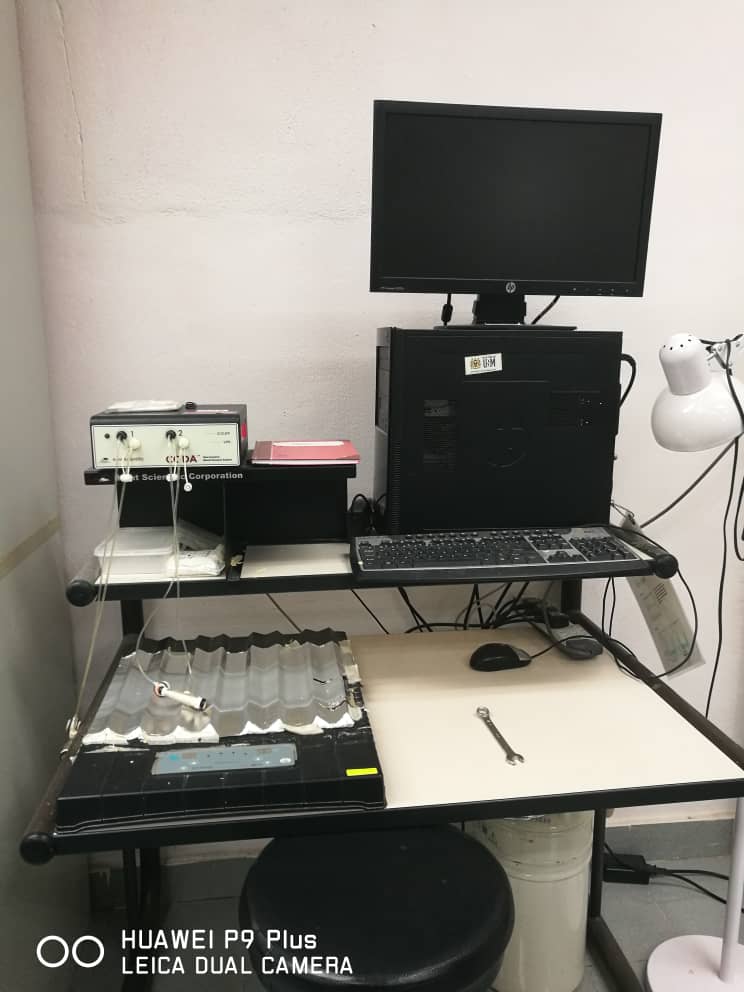


Laboratory Equipment & Services Information System
by Centralized Laboratory Management Office (CeLMO)
1. The CODA NIBP system is a computerized system that automatically performs rapid, simultaneous, multiple measurements of (6) six physiological parameters: systolic blood pressure, diastolic blood pressure, mean blood pressure, heart rate, tail blood flow, and tail blood volume on up to two (2) animals. 2. The CODA system is designed for mice, rats, gerbils and other small animals with a tail.
1. When starting the CODA application it automatically opens the Device Manager and searches for attached CODA devices. Once a device is found, run selected device. 2. Restraint: a. When using the CODA restrain/warming system, slide nose cone to the front of the restrainer and remove rear gate. Place animal in restrainer preferably by allowing it to enter freely or using as little force as necessary. While ensuring the tail is extending out the rear of the holder replace the rear gate and tighten thumb nut. Place the animal on the V grooves on the Animal Warming Platform. Note: warming block may not warm animals sufficiently in a room below 260 C (790 F) especially when placed in thick polycarbonate restrainers supplied with CODA unit. b. Using a restraining device with thinner walls to conduct heat from a warm water blanket (e.g., aerated 50ml conical tube for mice or pastry bag for rat covered in warm water glove/blanket) may improve tail blood flow and BP readings. 3. Adjust the nose cone so that the animal’s movement is limited but the animal appears comfortable. 4. Slide Occlusion Cuff up near the base of the tail, it should slide freely, but fit closely when the not pressurized. If resistance is encountered when sliding the cuff up the tail, STOP, do not force the cuff further. Position the cuff as near the base of the tail as possible without force. Forcing the cuff will cause occlusion of vessels resulting in poor BP measurement. 5. When using the CODA restraint system, secure the Occlusion Cuff inside one of the grooves located in the back of the holder. 6. Slide the VPR cuff up the tail with the larger end first, until reaching the Occlusion Cuff. Do not force the cuff, if resistance is felt use the next size cuff. Secure the VPR cuff inside the groove opposite the one used for the Occlusion Cuff. 7. Personnel Manager-Allows researchers, technicians, specimens, and animals (mouse, rat, etc.) to be selected/added/deleted while setting up an experiment. 8. Set up a new experiment by following prompts for selecting researchers, technicians, and specimens. 9. New session will start the process for acquiring measurements. 10. For unanesthetized animals 10 acclimation cycles is recommended. Measurement cycles can be set to desired number of measurements at desired intervals. 11. Minimum tail volume is listed as 15 by default. 12. For best results set run-time to 20 seconds. 13. Cycles will begin after clicking on “Finish”. 14. Data can be displayed and saved as an excel spreadsheet for review
- Manufacturer
- Brand
- KENT SCIENTIFIC
- Model
- CODA
- Year Manufactured
- Year Procured
- 2013
- Department
- PUSAT PENGAJIAN SAINS FARMASI
- Location
- Hypertension And Cardiovascular
- Date Registered LESIS
- 31/01/2024
- Category
- Research Equipment
- Function
- Booking,
- Category
- Staff operated
- Equipment Status
- Good
Person In-Charge






